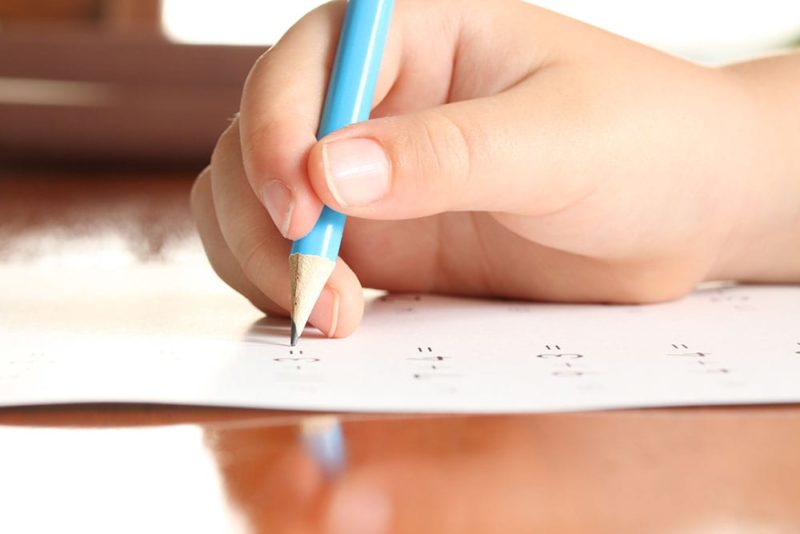If your child’s or student’s handwriting is hard to read, cramped, all over the page or full of mistakes, there are small changes you can help introduce that can make a big difference to their handwriting.
- Posture: Make sure they are sitting at their desk or table with good posture: feet flat on the floor, back straight, arms resting comfortably on the desk at a 90 degree angle. This will ensure their body won’t fatigue too quickly and that they are in the best position to write with ease.
- Pencil grip: Holding their pencil using a functional tripod grip (similar to that in the image above) will let their hand and fingers control their pencil properly, allowing for adequate movements at their thumb and finger joints.
- Pressure: Check they are pushing down with their pencil using just the right amount of pressure. Signs of too much pressure include very dark writing, heavy indents into the next page and children’s hand and fingers fatiguing very quickly. If kids aren’t using enough pressure, their writing will often be too light, making it difficult to read.
- Letter formation: Ensure your child is forming all the letters of the alphabet correctly. Using the correct formations will make it easier for them to make cursive joins later, as well as increasing their handwriting speed.
- Spacing: Encourage children to leave at least 1.5 cms (or a finger space) between their words – this will make each word look more defined and easier to read.
- Size: Help your students keep their letters the correct size – ensuring the tall letters (b, d, f, h, etc.) are tall, the tail letters (g, j, p, q etc.) have a long enough tail and the short letters (a, c, e, m etc.) are short and sitting correctly on the line. You can use paper that is lined both above and below the main writing line — we often refer to this as ‘sky – grass – earth’ (which you can read more about in this Your Kids OT article).
- Mistakes happen: Teach your child to neatly cross or rub out any mistakes, rather than writing over the top of mistakes as this can make their work look messy and more difficult to read.
- Extra support: If your child has hypermobile joints or difficulty controlling their pencil or pen, use appropriate writing tools with a thicker shaft can help as this will make it easier for them to hold and control their pencil with less hand fatigue.
- Slow down: Encourage your child to not rush – reminding them it is not a race and there is no point finishing their work first and getting all the answers correct if no one can read what they have written!
- Practice, practice, practice: Yes, even when it is school holidays, practicing their handwriting is important so they maintain the skills they already have and so they don’t slip back into bad habits. If you want a hand with this (pardon the pun!), we can help your child at our handwriting holiday groups (for Years K-2) — they’re great for building and consolidating your child’s skills in a fun environment.
If your child needs extra support with their handwriting please get in touch with us or your child’s Occupational Therapist.
We also offer school-based screenings and consultations if you have students who require additional handwriting assistance. Please contact us to see how we can help your school.


